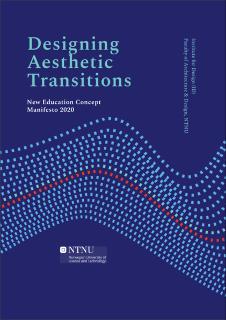| dc.description.abstract | The roles of designers have expanded and diversified rapidly in recent decades. One might expect this change to be driven by practice, but it is not. Instead, it is fueled by new design theories that free people to link design thinking and design acting to their own field of expertise.
We don’t call our cohorts ‘students’. Instead, we prefer design-techne. Reflecting the Ancient Greek philosophical term for making and doing, we want knowledge to grow beyond university and into professional life. Theory never in isolation. Forever learning. Forever changing, leading the world into new futures. Practice must keep up with us, not the other way around.
Each design-technee enters design education with distinct talents and interests. To unleash those individual design-technee aptitudes, we must allow them to select or even create their own educational path. We want them to become resilient designers with a personal voice, designing aesthetic transitions.
The means design-technees becoming agents of their own future, informed by our exploration of what the act-of-design is all about. | en_US |
